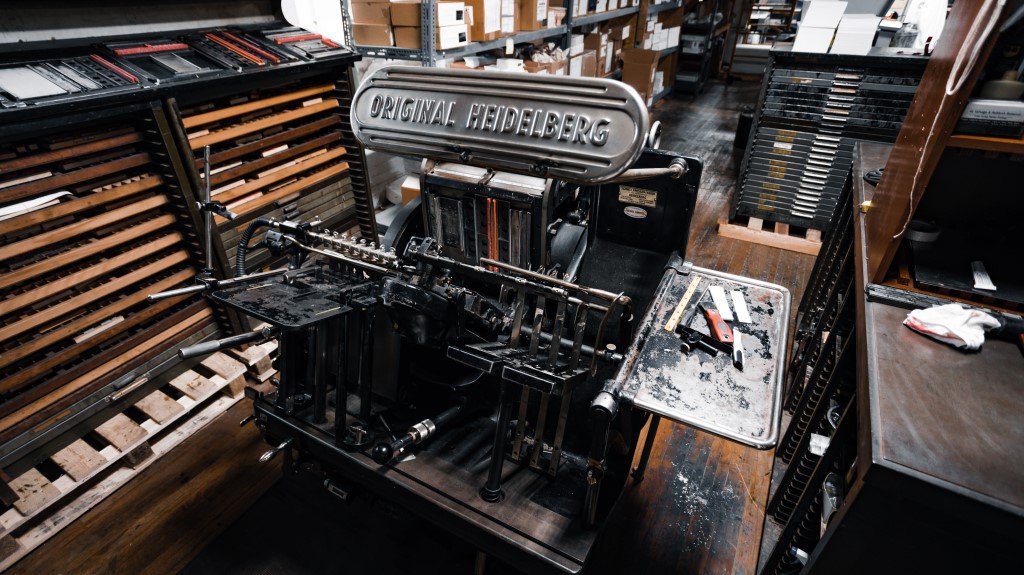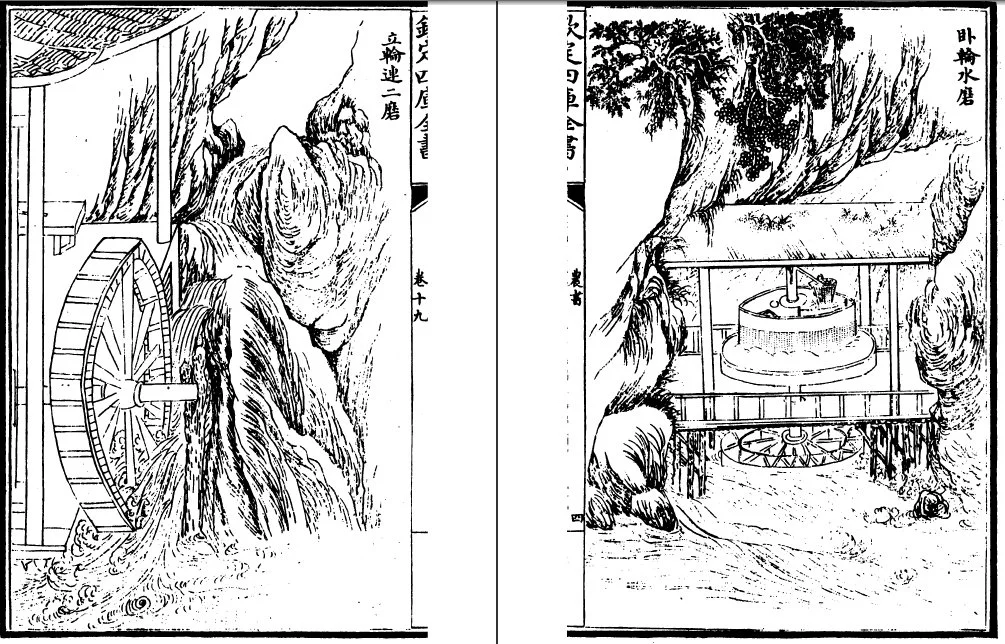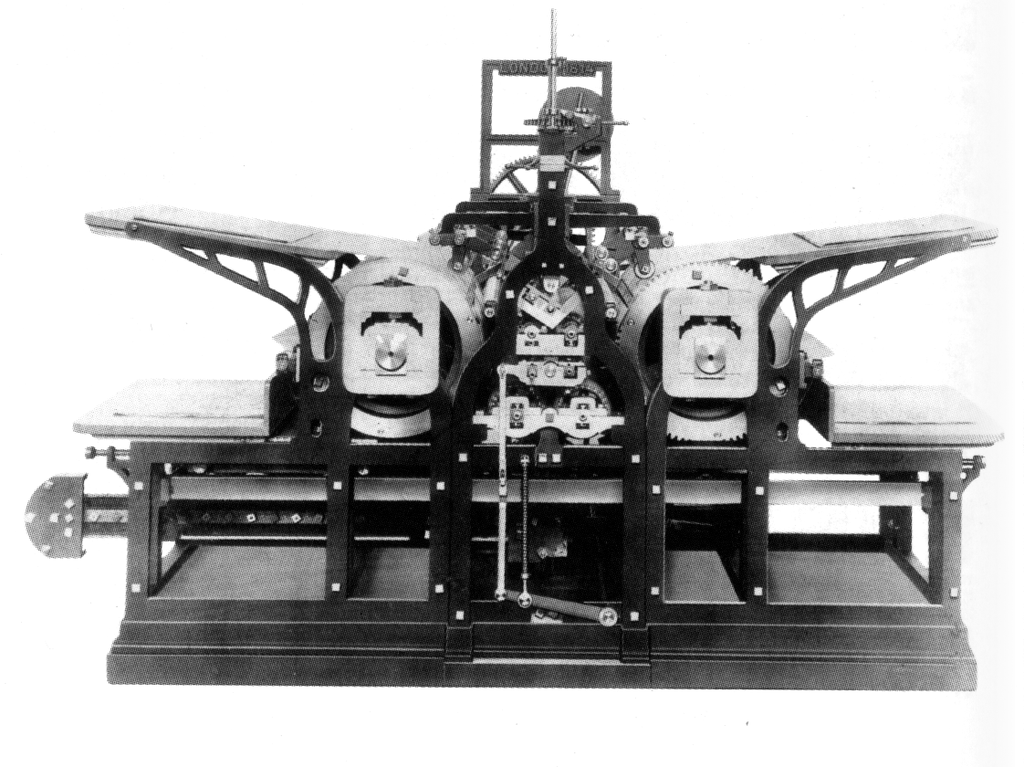The Printing Press Invention: History, Important Dates, & Facts
The exact date of the first printing press invention is unknown, however, printed materials date as far back as 868 A.D. Here is a general timeline of the printing press invention. Click on each section to learn more.
Looking for the most up-to-date printing solutuions? Contact us.
The printing press invention: Learn about its rich history
The Printing Press Invention
1. Block Printing: Pre 868 A.D.
Even though many people believe that the first printing press was invented by Johannes Gutenberg, people in China were actually using a process known as block printing to create printed text many centuries before the Gutenberg press. Block printing involves using panels of wooden blocks that have been hand-carved in reverse.
The ink was then applied to these blocks and they were pressed onto paper to form the printed text. It is unclear how long ago this process was developed (possibly as long ago as the 6th century), however, the oldest known printed book that used this method is called The Diamond Sutra, a Buddhist book from Dunhuang China dated 868 A.D. Other examples of block printing have also survived including:
Mathematic charts
Vocabulary guides
Etiquette instructions
Funeral and wedding guides
Children's educational materials
Dictionaries
Almanacs
A calendar dating 877 A.D.
Block printing was also used during this time period in both Japan and Korea.
Learn more about the block printing press invention in this video
2. Moveable Type: Between 970 - 1051 A.D.
Moveable type replaced block printing around 970 A.D. The first version of this type of printing involved carving individual letters into clay blocks and then baking them until they were hard. These blocks were then arranged onto an iron frame which was pressed against an iron plate. The great advantage of the moveable type was that you could re-use the letters for different texts.
This process was created by Bi Sheng who lived in Yingshan, Hubei, China from about 970 to 1051 A.D.
3. Wood Type Updated: 1297
The process of using wood type made a comeback in 1297 when a Chinese magistrate called Wang Zhen improved on the technique. He developed a way of making the wood more precise and durable thus giving you a better-finished product. He also created a type of revolving table that the typesetters were able to use to organize the type more efficiently.
His process greatly sped up the printing process. The book Nung Shu was printed using this process and is considered to be the world's first mass-produced book.
The image above is a sample page from the book Nung Shu
4. The Gutenberg Press: 1450
Johannes Gutenberg started experimenting with printing while he was exiled from Germany in Strasbourg France in 1440. By 1450, he had developed a printing machine that was ready to be used commercially. Gutenberg's printing press used metal pieces instead of wood.
Each letter was made to uniformly fit together so that the resulting print would be in perfectly straight lines and columns. He also created a special ink that would stick to metal. In addition, he figured out a way to flatten the printing paper to give a better finished product by using a winepress that had previously been used to press grapes and olives.
Gutenberg used his printing press invention to print the famous Gutenberg Bible. He made about 180 copies of the Bible each containing 1.300 pages. All of the pages of this beautiful book had 42 lines of Gothic type, set in double columns. It even featured some letters printed with coloured ink. There are still 21 complete copies of this Bible today.
The invention of the Gutenberg press meant that books could finally be mass-produced and at a fraction of the cost of previous printing methods. The printing press invention is credited with contributing to the growth of literacy, education, and the availability of uniform information for the common person.
Watch a demonstration of how printing was done on the Gutenberg Press
5. The Spread of Printing in Europe: 1465 - 1495
Many workers who had helped Gutenberg perfect his printing process became printers themselves in Germany. The printing press was later brought to Italy in 1465 and in 1470, German printers were asked to set up printing presses in Sorbonne Paris.
Spain and Portugal invited German printers to set up in their countries in 1473 and 1495 respectively. Finally, the printing press was brought to England in 1476 by William Caxton. Caxton was an Englishman who had gone to cologne to learn how to print in 1471.
6. Industrial Printing Press Invention: 1800 - 1843
Even though the essential workings of the Gutenberg press remained intact, the invention of mechanical printing presses made the printing process much more efficient. In 1800, Lord Stanhope built a press that was completely made of cast iron, with double the printed area, and that was able to produce 480 pages per hour thus doubling the production of the previous presses.
The steam-powered rotary printing press, which Richard M. Hoe invented in the United States in 1843 made the printing process even faster, producing millions of copies of a page in one day.
Image source: User:Parhamr, Public domain, via Wikimedia Commons
Printing Press Invention: Steam powered printing presses made printing more efficient
7. Modern Printing Processes: Offset and Digital Printing
Two of the main printing processes used today are offset and digital printing.
Offset Printing:
Offset lithography printing involves transferring your image onto an intermediate surface before printing it onto the final sheet. It is ideal for printing longer runs, over 1,000, with either single, multi or full-colour printing.
Offset printing is often considered to be a higher quality printing method, however, digital printing technology has improved considerably over the years, so now you are able to get a much better-finished product than you could when it first was introduced.
Digital printing:
Digital printing uses digital-based images from desktop publishing or other digital sources to print directly onto a wide variety of media. Digital printing is either toner or inkjet printing. Both toner and inkjet printing uses CMYK colour to achieve printing full colour on a wide spectrum of paper stocks.
Ideal for smaller volume runs, digital printing offers many possibilities for developing your project. This technology delivers on-demand printing for brilliant, eye-catching results. Digital printing is perfect for small business solutions.
Digital printing is perfect for small business solutions.
Looking for Modern Printing Solutions? Contact JH French
If you are looking for the most modern and high-quality printing solutions, contact JH French.
JH French is a printing company that has been in business for over 120 years! We are a family-owned and operated business. The current owner’s father and grandfather all worked in printing.
We offer a wide range of printing products and services for unions and businesses, large and small, across Hamilton, Ontario, and throughout all of Canada.
We work closely with our customers to determine their wants, needs, and budget, and we help them get top-quality printing products every time.
To learn more, contact us now.
What our customers are saying…
★ ★ ★ ★ ★
“Excellent experience, have used them for about a year. Always clarifying info, always meets deadline[s], manages expectation[s] and quality printing products. Will continue to use them! Very friendly and professional.”



